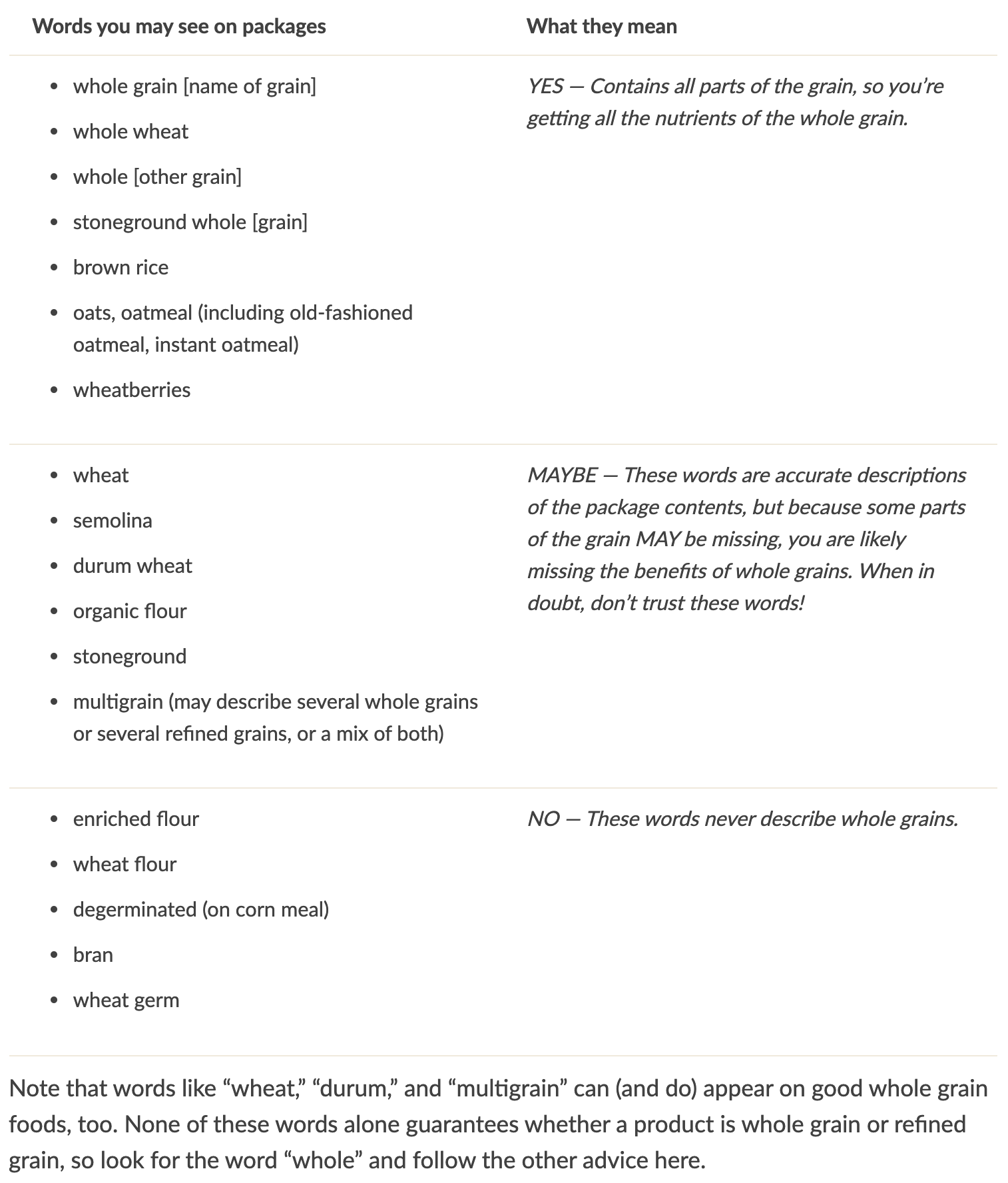For some reason, if we really have to buy some packaged food, how may we assess if it has whole grains or refined grains? Identifying Whole Grain Products by Whole Grains Council is an excellent narrative. An excerpt from this article:
Additional tips by Whole Grains Council (same article as above):
FDA Guidelines: For labeling of whole grains, see this long, detailed article: Whole Grain Labels (2006).
Summary: A broad guideline is to look for the word 'whole' in Ingredients section of Nutrition Label. But there are some interesting exceptions — it's all these exceptions that make food labels confusing!
For example, 'pumpernickel flour' is whole rye flour. So it's not labeled as 'whole rye flour' or 'whole pumpernickel flour' — it's simply 'pumpernickel flour'. And 'pumpernickel' is not the name of a whole grain, it's the name of a flour made from rye. Oh, well!
And how about something called 'whole white wheat flour'? Turns out white wheat is a whole grain — a type of wheat! So 'whole white wheat flour' is actually made of whole grains!
More info: How to Identify Whole Grains in Packaged Foods? is a good 2-page PDF to browse through.
A wonderful 8-min video explaining how to read FDA-regulated food labels in USA to make sure that 'whole' grains were used, not refined.
Jeff Novick is a WFPB nutritionist with excellent videos on label reading. This video is not about whole grains vs refined grains. It's about packaged cereals which often have added sugars, preservatives and sodium.

 Instagram
Instagram YouTube
YouTube